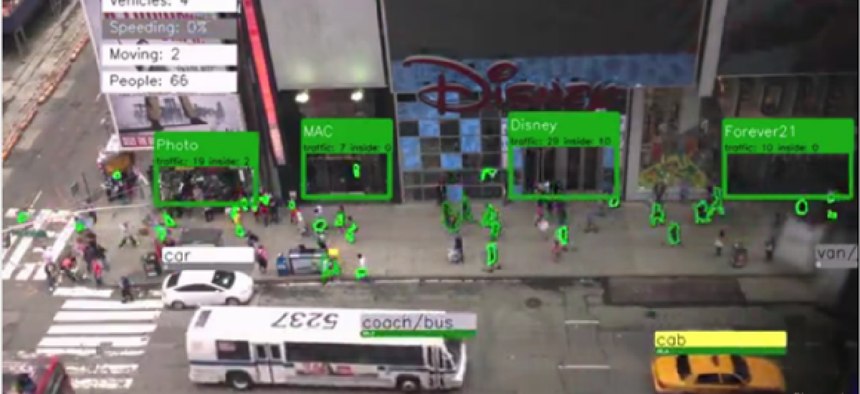New York tests video analytics for foot traffic


Connecting state and local government leaders
New York City has partnered with analytics firm Placemeter to map the flow of pedestrian traffic through the city to help understand and anticipate the demand for new public services and business opportunities.
Think of it as a benign Big Brother. New York City is testing a new application that analyzes video streams of the city's streets to glean data about pedestrian traffic patterns.
Data showing the flow of people can offer several advantages, say city planning officials, from helping small businesses scout new locations to enabling the sanitation department to anticipate demand for trash pick-ups.
"Our goal is to build a real-time data layer about what is happening in the physical world, where people are, by analyzing existing video feeds and using computer vision algorithms on them," said Alexandre Winter, CEO and founder of Placemeter, the company that is providing the pedestrian data to the city.
According to Lindsay Mollineaux, a quantitative analyst with the city's Office of Data Analytics, "We had great city data on business conditions and demographics, but the one thing we really wanted were really granular, neighborhood pedestrian foot-traffic patterns."
The city currently uses the pedestrian traffic data primarily to aid those interested in opening small business to determine the most promising location. But there are many other potential applications.
"The Department of Sanitation has expressed interest in exploring further," said Nick O'Brien, chief of staff of the Office of Data Analytics. "If they know there's going to be more activity in an area they can be sure to get somebody out there to clear the trash bins so they don't overflow."
And consumers can use the data to decide when it the best time to go to a store or to buy tickets for a Broadway show. "We also have algorithms to measure wait time if there is a line," Winter said. "New York City has a lot of famous lines – like the TKTS line to buy a ticket for Broadway shows. We have a camera on that."
Winter adds that the tool can also be used to track the impact of changes in the city infrastructure on pedestrians. "Measuring the impact on foot traffic is pretty important," he noted.
Placemeter gets the video feeds from both public and private sources. Through an agreement with the city, the company analyzes video collected by Department of Transportation cameras. The company also has agreements with private companies operating video cameras. It even has a beta program offering people the opportunity to participate in bulk video capture by placing their old cell phone in a window to passively record video outside. The video will then be transmitted over the Internet to Placemeter via the individual's Wi-Fi.
"We provide little suction-cup holder to put the phone in the window," said Winter. For their part, participants have the prospect a earning a share of the revenue when the data is sold.
Placemeter is currently analyzing data from about 500 cameras in New York City. According to Winter, "We're going to cover most of the interesting places in the city within the next nine months and to do that we estimate we will need anywhere between 2,000 to 3,000 video feeds, which is not a lot."
Placemeter plans to deliver the data in real time and with resolution down to the address level. Currently, the city project only gets static snapshots of data, and the resolution is only at the neighborhood level.
"We're looking to improve this tool," O'Brien said. "This is really a phase one exercise. The administration is very interested in providing this kind of information on a neighborhood level all throughout the city. We're looking to expand this tool to help meet that need."
As for those concerned about privacy, Winter offers assurances. "Even though our system looks like a surveillance system, there are no privacy concerns. We don't recognize peoples' faces, and we don't store any video footage."
NEXT STORY: Report: Government website satisfaction drops




